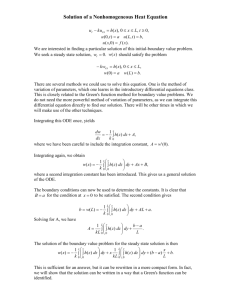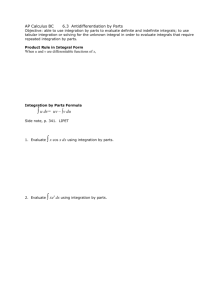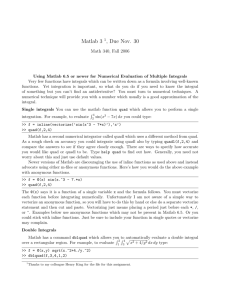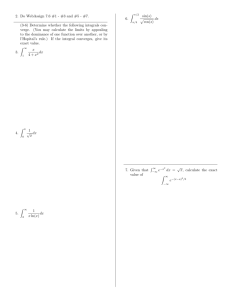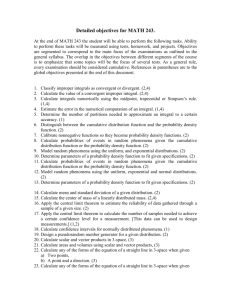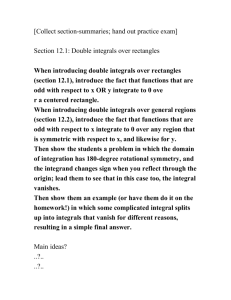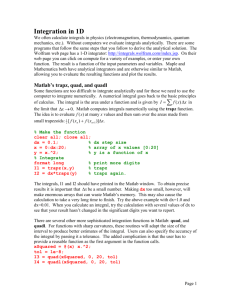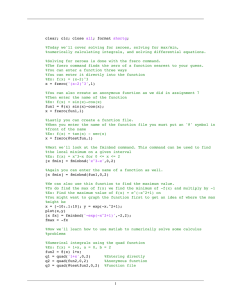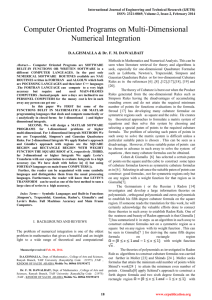Integrating discrete data Cumulative integrals Multidimensional
advertisement
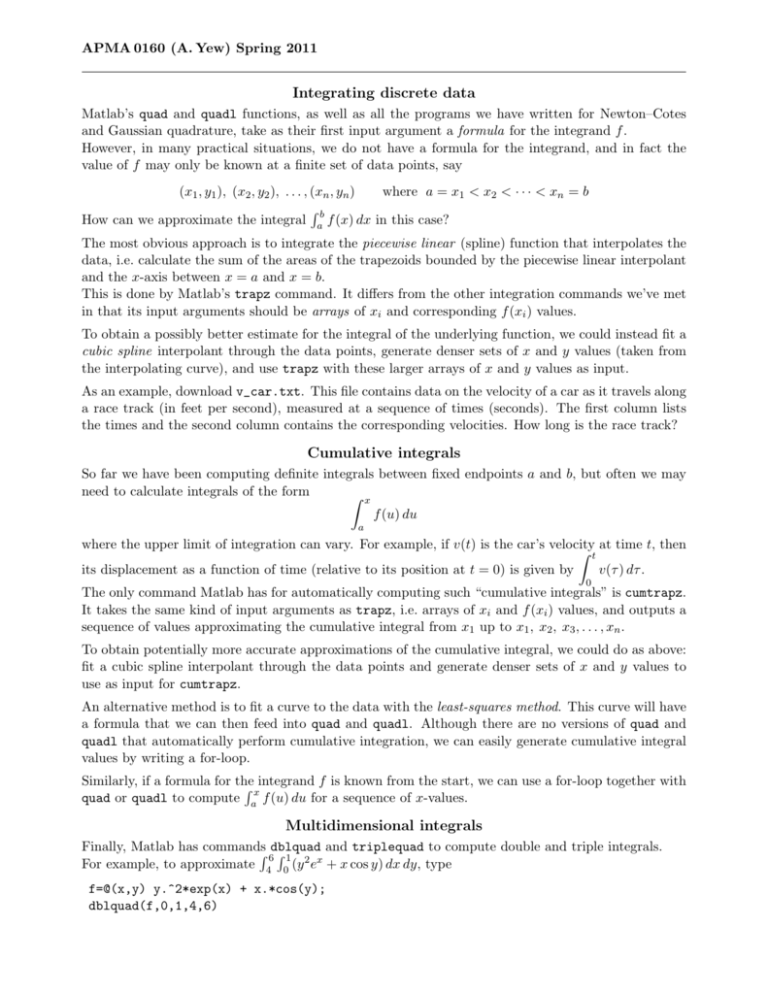
APMA 0160 (A. Yew) Spring 2011 Integrating discrete data Matlab’s quad and quadl functions, as well as all the programs we have written for Newton–Cotes and Gaussian quadrature, take as their first input argument a formula for the integrand f . However, in many practical situations, we do not have a formula for the integrand, and in fact the value of f may only be known at a finite set of data points, say (x1 , y1 ), (x2 , y2 ), . . . , (xn , yn ) where a = x1 < x2 < · · · < xn = b Rb How can we approximate the integral a f (x) dx in this case? The most obvious approach is to integrate the piecewise linear (spline) function that interpolates the data, i.e. calculate the sum of the areas of the trapezoids bounded by the piecewise linear interpolant and the x-axis between x = a and x = b. This is done by Matlab’s trapz command. It differs from the other integration commands we’ve met in that its input arguments should be arrays of xi and corresponding f (xi ) values. To obtain a possibly better estimate for the integral of the underlying function, we could instead fit a cubic spline interpolant through the data points, generate denser sets of x and y values (taken from the interpolating curve), and use trapz with these larger arrays of x and y values as input. As an example, download v_car.txt. This file contains data on the velocity of a car as it travels along a race track (in feet per second), measured at a sequence of times (seconds). The first column lists the times and the second column contains the corresponding velocities. How long is the race track? Cumulative integrals So far we have been computing definite integrals between fixed endpoints a and b, but often we may need to calculate integrals of the form Z x f (u) du a where the upper limit of integration can vary. For example, if v(t) is the car’s velocity at time t, then Z t its displacement as a function of time (relative to its position at t = 0) is given by v(τ ) dτ . 0 The only command Matlab has for automatically computing such “cumulative integrals” is cumtrapz. It takes the same kind of input arguments as trapz, i.e. arrays of xi and f (xi ) values, and outputs a sequence of values approximating the cumulative integral from x1 up to x1 , x2 , x3 , . . . , xn . To obtain potentially more accurate approximations of the cumulative integral, we could do as above: fit a cubic spline interpolant through the data points and generate denser sets of x and y values to use as input for cumtrapz. An alternative method is to fit a curve to the data with the least-squares method. This curve will have a formula that we can then feed into quad and quadl. Although there are no versions of quad and quadl that automatically perform cumulative integration, we can easily generate cumulative integral values by writing a for-loop. Similarly, if a formula for the R xintegrand f is known from the start, we can use a for-loop together with quad or quadl to compute a f (u) du for a sequence of x-values. Multidimensional integrals Finally, Matlab has commandsR dblquad and triplequad to compute double and triple integrals. 6R1 2 x For example, to approximate 4 0 (y e + x cos y) dx dy, type f=@(x,y) y.^2*exp(x) + x.*cos(y); dblquad(f,0,1,4,6)


